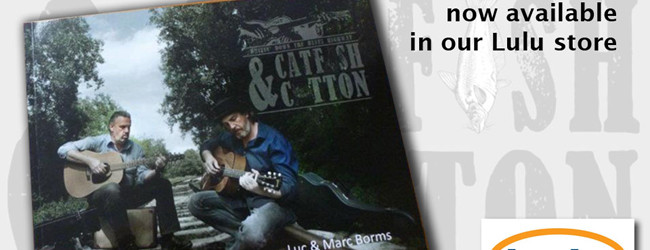 Written by two Belgian blues enthusiasts, Catfish & Cotton is an interestingly written account of a pilgrimage through the Mississippi Delta. Traveling through portions of Mississippi, Alabama, Louisiana and Arkansas, brothers Luc and Marc Borms have put together a guide of some of the most well-known, and some not so well-known, people, places and landmarks that have helped shape and support the blues. Not only do the Borms brothers show an appreciation for the genre of music itself, but also show an understanding that blues goes beyond the music. Blues is a culture. Blues is a way of life. Those featured in this book reiterate this message through their interviews and accounts.
Written by two Belgian blues enthusiasts, Catfish & Cotton is an interestingly written account of a pilgrimage through the Mississippi Delta. Traveling through portions of Mississippi, Alabama, Louisiana and Arkansas, brothers Luc and Marc Borms have put together a guide of some of the most well-known, and some not so well-known, people, places and landmarks that have helped shape and support the blues. Not only do the Borms brothers show an appreciation for the genre of music itself, but also show an understanding that blues goes beyond the music. Blues is a culture. Blues is a way of life. Those featured in this book reiterate this message through their interviews and accounts.
Catfish & Cotton is well organized, taking readers through Marc and Luc Borms delta adventure city by city and highlighting the people and places of interest they found there. The way that this guide varies in its content is amazing. While it definitely centers on the blues, it recognizes a variety of contributors from musicians, radio hosts and artists, to restaurateurs, store owners and museum staff. The interviews are intriguing, being both informative and personal to each of those featured. They show not only how people like musician Super Chikan and Eden Brent, acclaimed harmonica teacher and player Jon Gidick, award winning radio broadcaster Sonny Payne, painter and mural artist Cristen Craven Barnard, guitar builder and player Bill Abel, and many more aid in keeping blues alive and share their own stories and personal influences with readers.
The book also contains significant facts or an introduction of sorts, about many of the places and people the Borms visited. Usually these boxed out and bulleted portions can be found next to pictures or at the sides of the pages to give the reader some extra knowledge or information on the subject at hand. This, coupled with the brothers’ superb descriptions of their experience, whether it be the southern hospitality, food, or abundant cups of coffee, allows the reader to connect more with their story, even if they aren’t as familiar with the subject matter. It gives the reader a connection beyond a book spouting historical information and pulls them in on a more personal level.
The only compliant about this book is in the photography, not in the quality, but in the way it is printed. A majority of the pictures in the book are great, and very important in aiding the reader in their exploration of the area, but the details seem to get lost in black and white. Luckily, there is a color copy available, and is recommended for optimal reading pleasure. Whether you are looking for a book about the blues specifically, or just an engaging coffee table book, Catfish & Cotton has a lot to offer.


